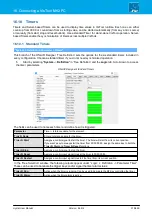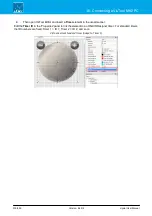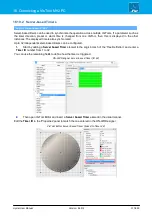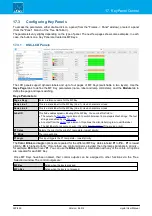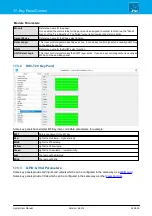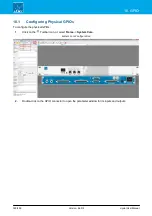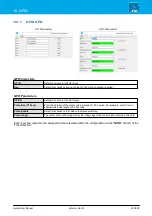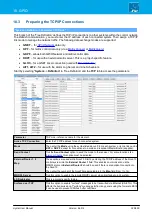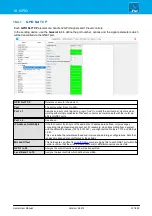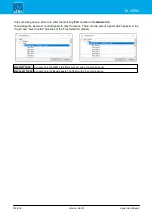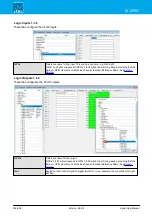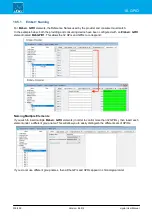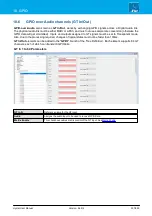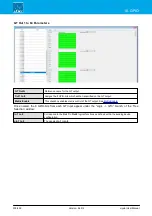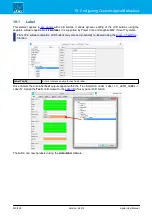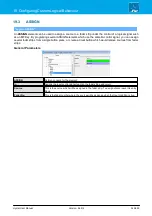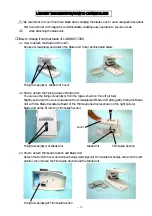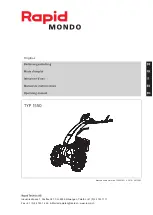
crystal User Manual
Version: 6.6.0/2
329/459
18. GPIO
18.3
Preparing the TCP/IP Connections
"System -> Definition -> Parameter = TCP Link"
This branch of the 'Tree Definition' defines the TCP/IP connections to other systems within the control network.
To establish communication, you must enter the IP address of each connected system. Then assign a TCP/IP
link mode to manage the network traffic. The following data exchange modes are supported:
·
GNET
– for
·
KPF
– for matrix control data only (via a
or
).
·
GKPF
– allows both GPI/O Network and matrix control data.
·
DKPF
– for use with an external matrix server. This is a project-specific feature.
·
GLOC
– for a GNET Local connection (used with
).
·
AIF1, AIF2
– for use with the Alarm Log Server and Line Schedulers.
Start by selecting "
System
->
Definition
" in 'Tree Definition' and the
TCP
tab to access the parameters:
Parameter
TCP Link – reference name for the element.
Active TCP Connection
Enter the TCP/IP address for each connected system.
Mode
Then enter the
Mode
using the syntax listed above. From each system, only one link can be
KPF
or
GKPF
, except for connections to a main and redundant Master Board (sapphire).
Send Context
Tick the
Send Context
option to send the mode to the receiver. For some functions like
this option must be activated.
External Router 1, 2
Map
These options are used with a Nova73. Start by entering the TCP/IP address of the Nova 73
control system into the
External Router 1
field. This enables communication via the
MNOPL protocol.
External Router 2
should be used if there is a redundant connection to
the Nova 73.
Then enter the number of the Nova73 mapping table into the
Map
field (from 1 to 16).
MNOPL Server
Tick this option to enable the remote MNOPL server when interfacing to a z4 system.
LS Doublestar
This is a project-specific feature.
Surface over TCP
Tick this option to enable "surface" messages to be transmitted via Ethernet (KS-ETH). This
affects the transmission of "surface" messages to/from key panels using the firmware KS16.
It can be used to prevent CAN bus buffer overflows.

